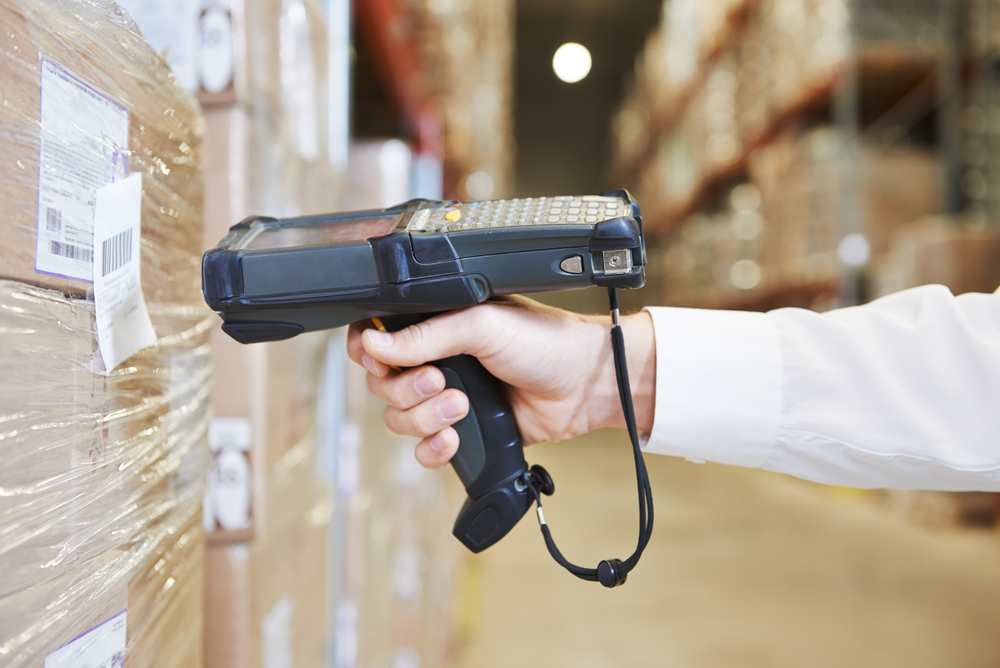One of the best decisions you can make for your warehouse is to implement systems that automate some of the steps. However, you may have noticed that many of the warehouse management systems (WMS) out there rely on a barcode system. Do you need a barcode system alongside a WMS to get everything out of the software? Or can you use one without the other? Let’s take a look at how a barcode system can help you cut operational costs while benefiting the functionality of your WMS.
Are Barcodes Necessary When Using a WMS?
There is a lot of confusion when it comes to using a WMS without a barcode system or vice versa. The common misconception is that one cannot work without the other, but that is not the case. You do not need a barcode label on every single product when using a warehouse management system (WMS). The extent of your barcode system depends largely on how you use your WMS.
Traditionally, a WMS is used to generate and perform tasks to a higher degree of efficiency. For example, you can accelerate putaway practices by getting your employees to synchronize their movements. Whenever a task is completed, someone can update the system. However, you could potentially get far more inventory accuracy and productivity by implementing a barcode system alongside a WMS that works in real-time, such as Agility WMS from Wisys.
There are various forms of mobile devices that can be used to improve the functionality of your WMS. In recent years, barcode scanners, tablets, and even mobile phones are used as an integral piece of the process.
So, do you need a barcode system alongside a WMS? In a warehouse where you need to save input time, identify barcoded items, and verify their status, the answer is yes.
Why Use Barcodes in a Warehouse?
Warehouses often contain more than one pallet. You have individual products that need packing at the same time as massive bulk shipments. Every order that comes in has unique steps. Manual data entry and spreadsheets are not going to be enough to help you keep accurate inventory counts. Mistakes can easily be made when real-time data is not easily collected, particularly if something is wrong with one of the items shipped out.
Warehouse barcode labels have several inherent benefits, but the biggest is velocity. With barcodes, your workers can tag locations, including the rack, pallet, or container of items. This is useful in warehouses where semi-automated cycle counts or inventory transfers happen periodically.
In addition to more accuracy, barcode systems have the following benefits:
- Fewer errors and more inventory visibility
- Reduced operating and clerical costs
- Faster order processing speed
- Organized and optimized warehouse layout
- Scalability for future warehouse expansions
- Greater inventory accuracy
- Real-time data collection
- Enhanced supply forecasting
How Barcodes & Warehouse Management Systems Harmonize
As you can see, barcodes are a powerful tool when paired with a warehouse management system. You can then use the information gathered by scanning barcodes to make improvements to the warehouse. Whether you need to reorganize, increase automation, decrease errors, or reduce operational overhead, there are dozens of ways using a barcode system alongside a WMS can improve your business.
Think of barcodes as part of the organizational practice that allows you to automatically gather and track data. When that data is added automatically to the WMS, you get to see all the numbers and figures centrally. This gives you a distinct advantage. You can look at the data, analyze it, and then coordinate movements. For example, should a defect be reported in an item, you can send the notification through the WMS to the mobile devices held by the workers. They can then begin the recall process.
How to Implement Barcodes Correctly
WMS software works by keeping an accurate tally of your stock, including its location. With a barcode scanner, ensuring that items are being placed in the right spot or in the correct order, the usefulness of the WMS is expanded. However, this does not happen automatically. When you are using a barcode system alongside a WMS, you must make sure that barcodes are logically placed, numbered, and scanned correctly.
In order for barcodes to be implemented correctly, you want labels that guide employees to a location, as well as check digits within the code. Every item that comes into your warehouse should be given a unique number and storage location if it doesn’t already have an SKU. Multiple barcode symbologies exist, so ensure that the barcode system and WMS you use can recognize these symbologies, such as UPC, EAN, or QR codes.
Final Thoughts on Barcode Systems
If you want to get the most out of your WMS, it is best to implement some barcoding. With a barcode system, you can start to automate some processes and see enhanced accuracy and integrity. However, even if you opt out of mobile barcode scanners, for now, a WMS can still benefit your warehouse immensely. If you are looking for a flexible WMS that can do it all, consider Wisys’ Agility WMS. As an out-of-the-box solution, Agility WMS works alongside your barcode system right away.
Give Wisys a call today at 770-955-3530 to learn more about how Agility WMS can work for you or fill out the form to experience a demo.


